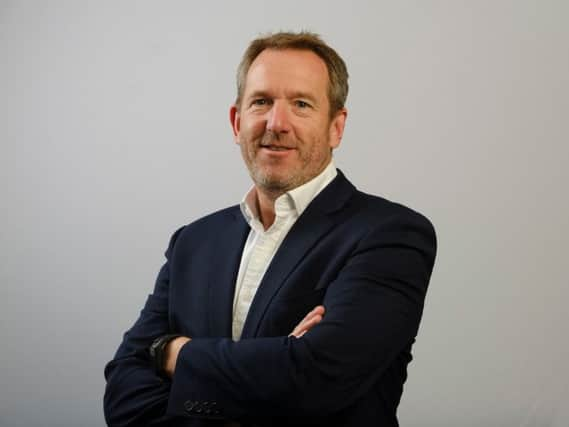Don’t hide diversity, everyone deserves a chance - comment


Get it right, and diversity is a compelling source of innovation and creativity, with research pointing to an innovation mindset six times higher in the most-equal cultures than in the least equal ones.
Gender balance has been talked about and tackled head on, with tangible progress towards equality, demonstrated through efforts to narrow gender pay gaps across business. So much so, that while there’s much more still to do, the conversation both globally and locally is moving on.
Advertisement
Hide AdAdvertisement
Hide AdInclusion and diversity cannot be simply and conveniently defined as “men vs. women”. Intersectionality – the points of overlap or connection between diverse social groups such as race, class, gender and sexuality, where discrimination or disadvantage is amplified – is now becoming front and centre of the debate.
According to the Lord Davies review in 2011, women accounted for just 12.5 per cent of board positions in FTSE 100 companies, and a target of 25 per cent by 2015 was set and achieved. The tone and the direction of travel had been set.
Governments now regularly report on gender issues, and this year the Scottish Government produced its Gender Pay Gap Action Plan with its “whole systems” approach that reflects the sheer complexity of the issues around gender equality.
Parity
Alison Rose is CEO at Royal Bank of Scotland, Dame Carolyn Fairbairn is the director general of the CBI, while Tracy Black leads the CBI in Scotland. Accenture has a female CEO and we have committed to gender parity across our entire workforce by 2025.
On this ongoing journey, benchmarks have been established, leaders identified and celebrated, and targets set. The transparency given to the issue has been game-changing. The lesson we must draw is that the same principles are applied to the issues of intersectionality.
Even conscious efforts to highlight and celebrate diversity can miss those at the intersections, whose background, ethnicity, gender or other aspects of their personal experience and identity can be overlooked, unrecognised, unacknowledged and unaddressed.
At Accenture, we asked colleagues in our own LBGT+ network to share some of their experiences. There were so many positive stories to relate, but also instances where we learnt invaluable lessons about how to better put our principles into practice.
Stereotyping
For example, for some stereotyping can still be an issue. Gay women report that they have been told they “don’t look gay” or that they feel they constantly must “come out”.
Advertisement
Hide AdAdvertisement
Hide AdMoreover, some staff from ethnic backgrounds have reported experiencing a “double life”, while male couples have faced very different challenges to heterosexual colleagues when paternity leave is discussed.
Everyone who took part in the initiative talked about greater visibility of their challenges as being key to breaking down stereotypes and moving towards normalisation.
Beyond the LGBT+ community, the intersectionality debate is increasingly embracing social mobility and the equality of opportunity for those from disadvantaged backgrounds. Entry into business is gradually being opened up by new apprenticeship schemes, highlighting to many the problems faced when gender, class and ethnicity overlap.
Businesses cannot be truly representative until they are more diverse, while leaders must be authentic to build trust.
That’s why, as with the move towards gender equality, all organisations need to consider the issues of intersectionality. The policies we put in place and the culture we promote within our organisations must support all of our colleagues.
Les Bayne is joint MD of Accenture, Scotland